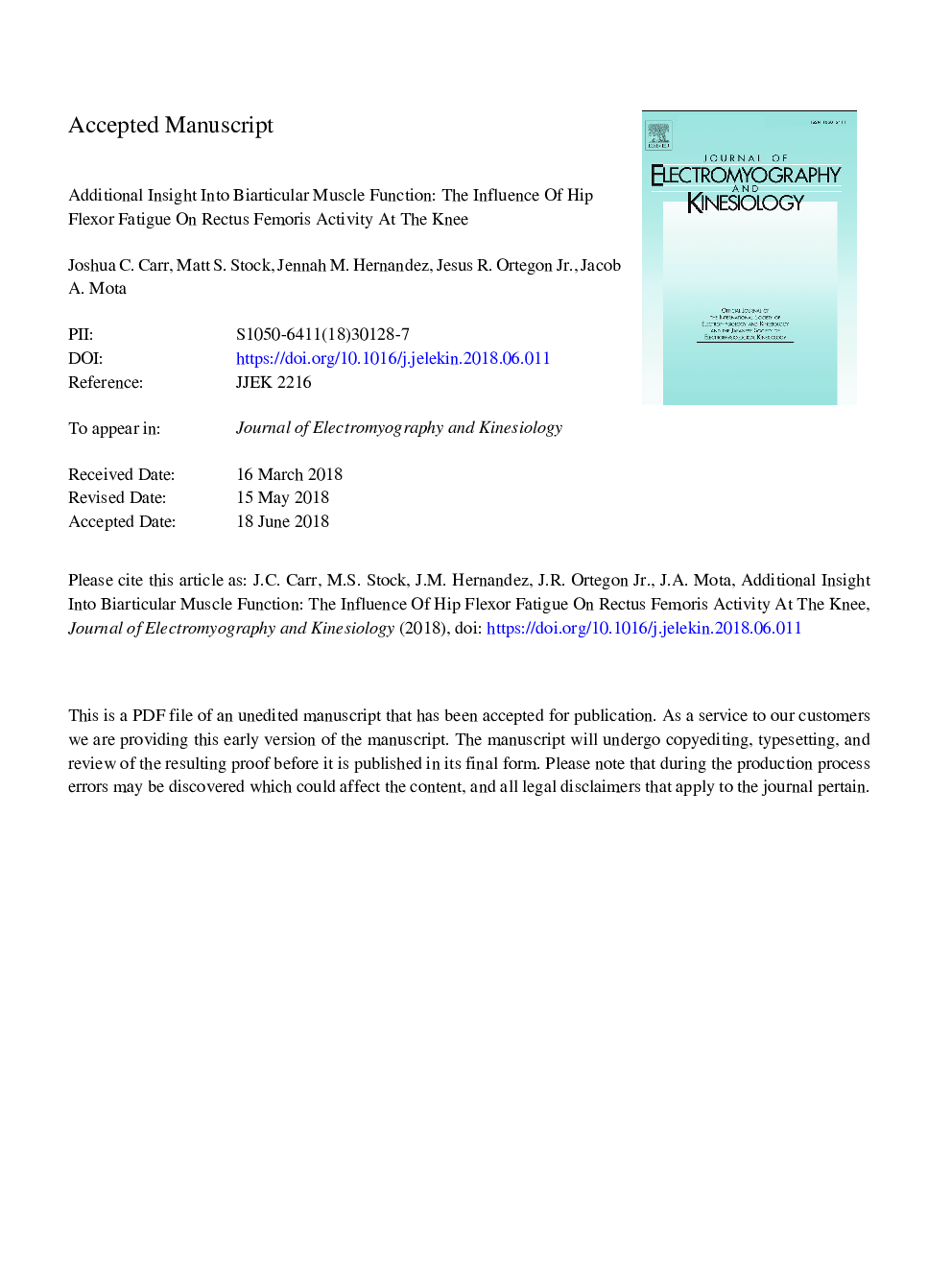| کد مقاله | کد نشریه | سال انتشار | مقاله انگلیسی | نسخه تمام متن |
|---|---|---|---|---|
| 8799743 | 1604171 | 2018 | 29 صفحه PDF | دانلود رایگان |
عنوان انگلیسی مقاله ISI
Additional insight into biarticular muscle function: The influence of hip flexor fatigue on rectus femoris activity at the knee
ترجمه فارسی عنوان
بینش اضافی برای عملکرد عضلانی بیارتیچول: تاثیر خستگی فلکسور هیپ در فعالیت رکتوس فمورس در زانو
دانلود مقاله + سفارش ترجمه
دانلود مقاله ISI انگلیسی
رایگان برای ایرانیان
کلمات کلیدی
واحد موتور، همکاری کننده، عصبی عضلانی فیبر عضلانی پتانسیل عمل،
موضوعات مرتبط
علوم پزشکی و سلامت
پزشکی و دندانپزشکی
ارتوپدی، پزشکی ورزشی و توانبخشی
چکیده انگلیسی
We evaluated the compensatory adaptations in muscle regionalization and synergist activity after fatiguing a biarticular muscle at one joint with different muscle lengths. Eleven men (meanâ¯Â±â¯SD ageâ¯=â¯23â¯Â±â¯3â¯years) performed 50 maximal concentric isokinetic contractions of the dominant hip flexors on two occasions. For one trial, the knee joint was fully extended. For the other, the knee joint was fixed at 70°. Maximal voluntary contractions of the knee extensors were performed immediately before and after the hip flexion fatigue protocol while bipolar surface electromyographic signals were detected from the vastus lateralis and at five points along the length of the rectus femoris. Regardless of knee joint angle during the hip flexion fatigue protocol, knee extension peak torque was unchanged following hip flexion fatigue. Electromyographic amplitude for the vastus lateralis (pâ¯=â¯.047, η2 = .338) and rectus femoris (pâ¯<â¯.001, η2 = .667) showed main effects for time, indicating higher and lower post-fatigue values, respectively. There was no evidence of region-specific rectus femoris adaptations during extension at the knee following fatigue of the hip flexors. These data suggest that synergistic adaptations were involved in maintaining knee extension peak torque following hip flexion fatigue.
ناشر
Database: Elsevier - ScienceDirect (ساینس دایرکت)
Journal: Journal of Electromyography and Kinesiology - Volume 42, October 2018, Pages 36-43
Journal: Journal of Electromyography and Kinesiology - Volume 42, October 2018, Pages 36-43
نویسندگان
Joshua C. Carr, Matt S. Stock, Jennah M. Hernandez, Jesus R. Jr., Jacob A. Mota,
